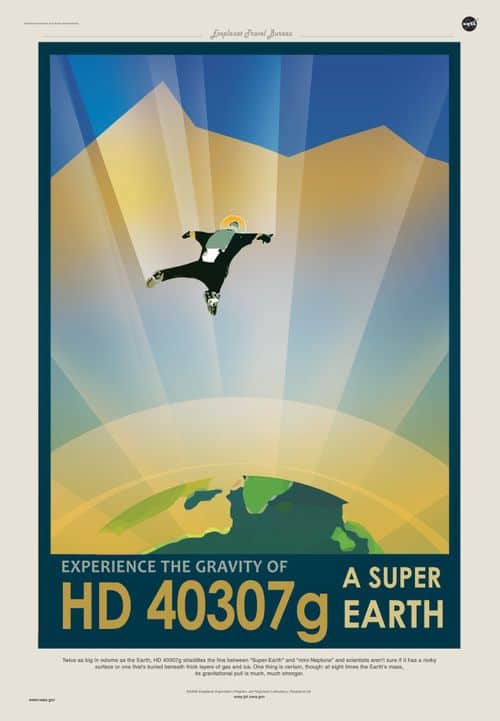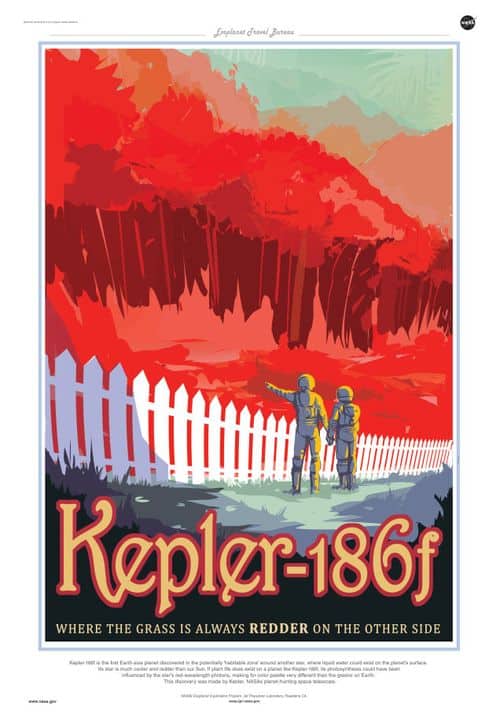Those of you into collectible travel items and/or space travel will probably enjoy these stunning posters NASA's Jet Propulsion Laboratory created in honor of a few of the exoplanets they've discovered with the Kepler space telescope.
An exoplanet, of course, is a planet orbiting a star other than our own.
NASA's description of the destination featured in the image at the top of this post:
Experience the Gravity of a Super Earth
Twice as big in volume as the Earth, HD 40307g straddles the line between "Super-Earth" and "mini-Neptune" and scientists aren't sure if it has a rocky surface or one that's buried beneath thick layers of gas and ice. One thing is certain though: at eight time the Earth's mass, its gravitational pull is much, much stronger.
And here's another, for the image below:
Where the Grass is Always Redder on the Other Side
Kepler-186f is the first Earth-size planet discovered in the potentially 'habitable zone' around another star, where liquid water could exist on the planet's surface. Its star is much cooler and redder than our Sun. If plant life does exist on a planet like Kepler-186f, its photosynthesis could have been influenced by the star's red-wavelength photons, making for a color palette that's very different than the greens on Earth. This discovery was made by Kepler, NASA's planet hunting telescope.
All of the posters are available for download in high-res.
For the third and final poster in the series, click AFTER THE JUMP…
The description:
Relax on Kepler-16b – Where Your Shadow Always Has Company
Like Luke Skywalker's planet "Tatooine" in Star Wars, Kepler-16b orbits a pair of stars. Depicted here as a terrestrial planet, Kepler-16b might also be a gas giant like Saturn. Prospects for life on this unusual world aren't good, as it has a temperature similar to that of dry ice. But the discovery indicates that the movie's iconic double-sunset is anything but science fiction.






